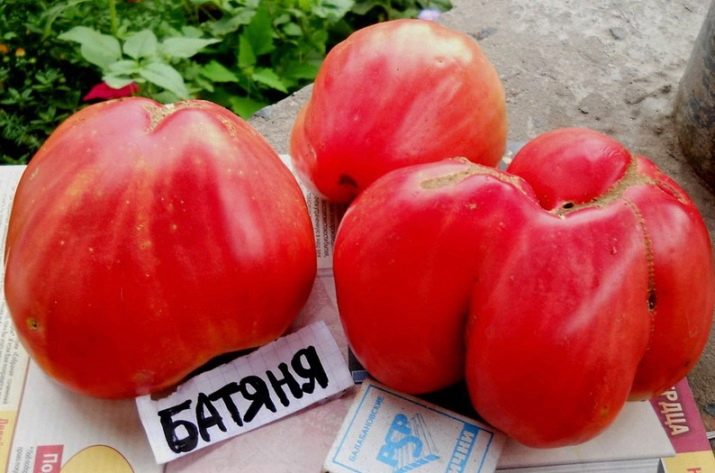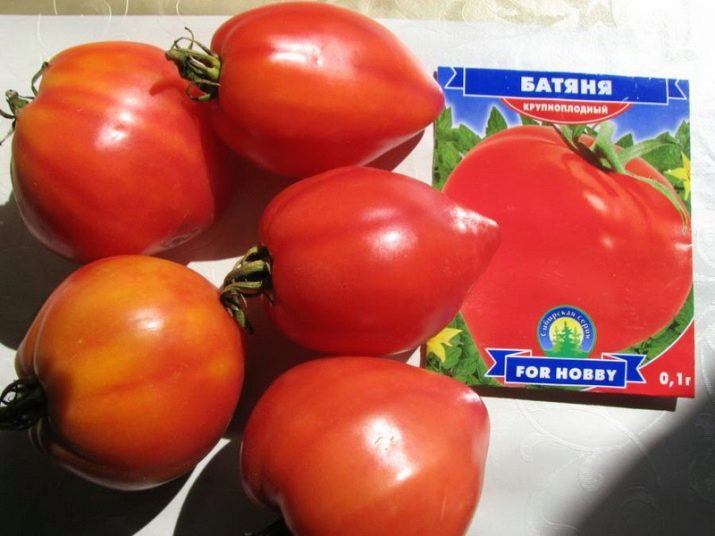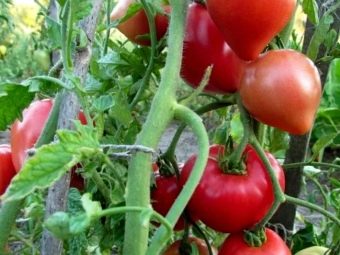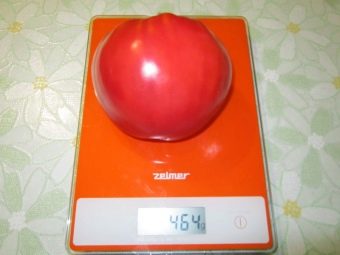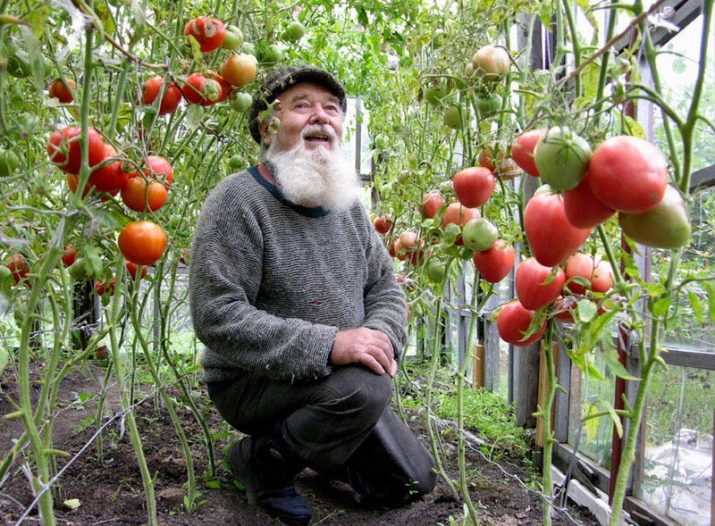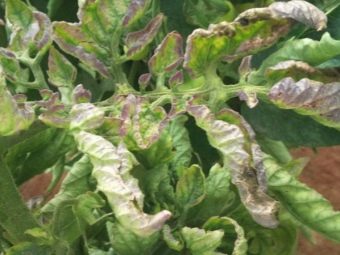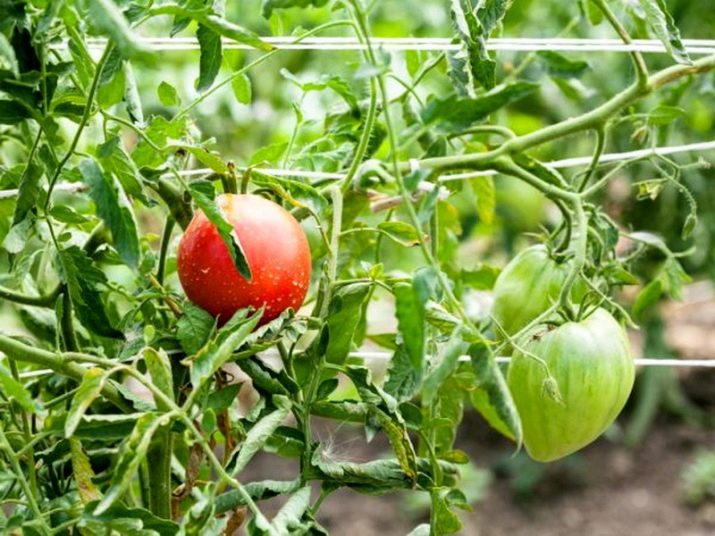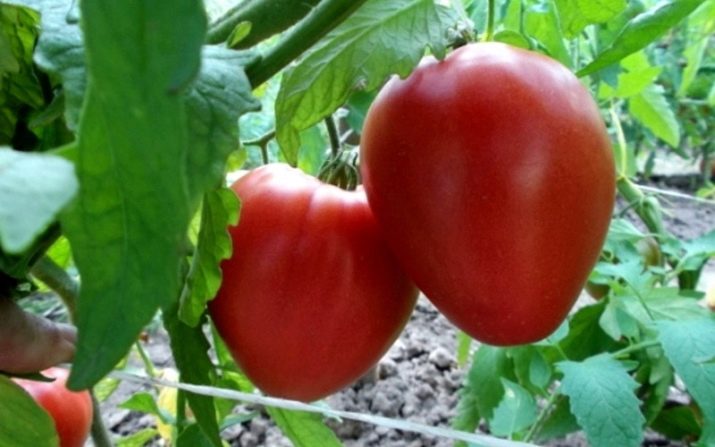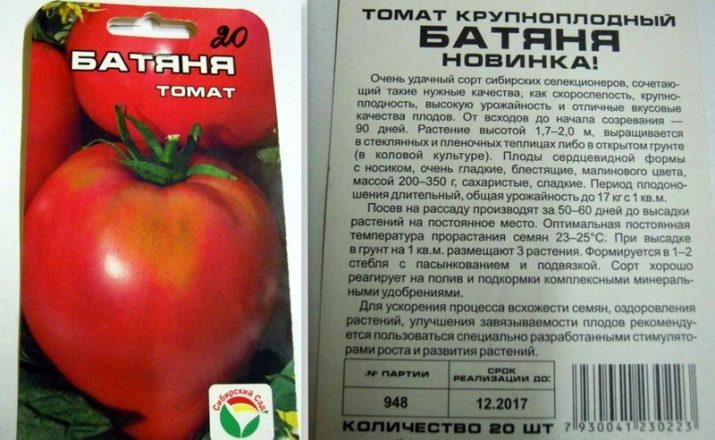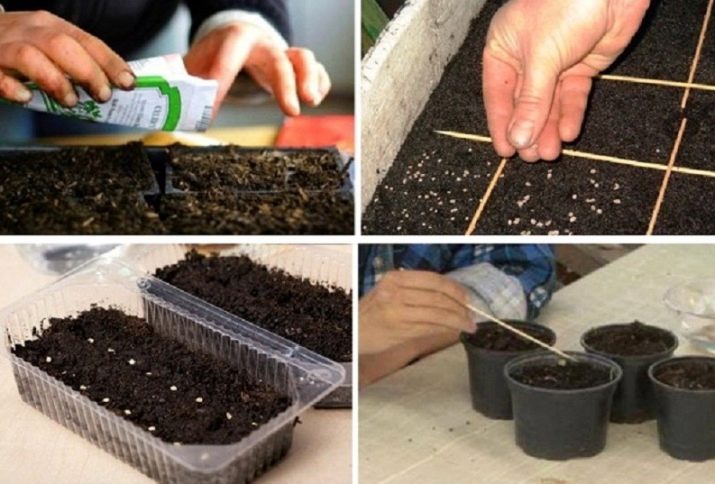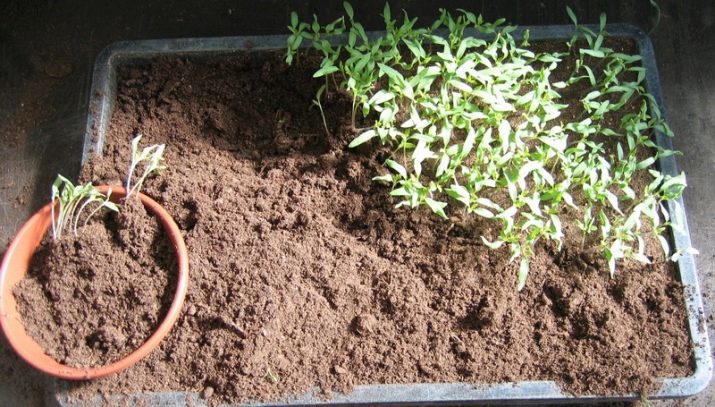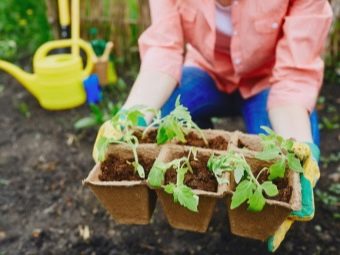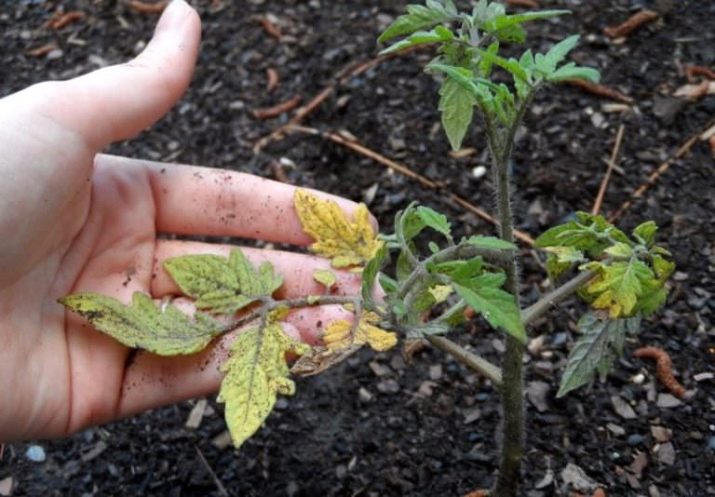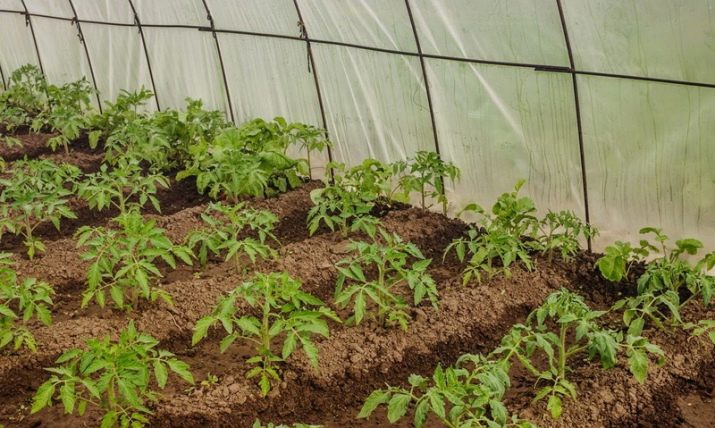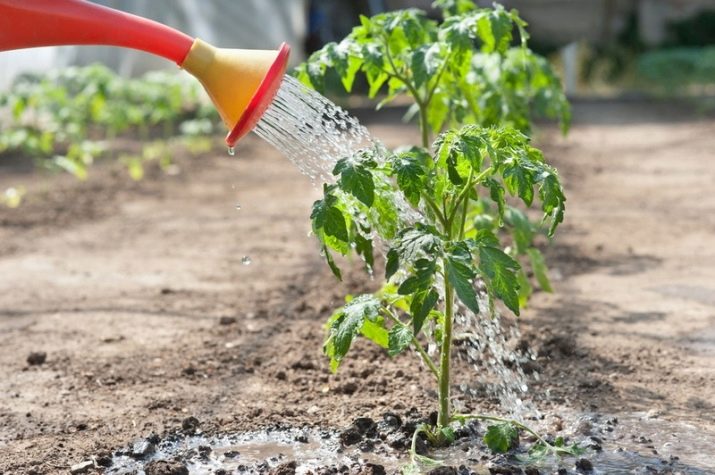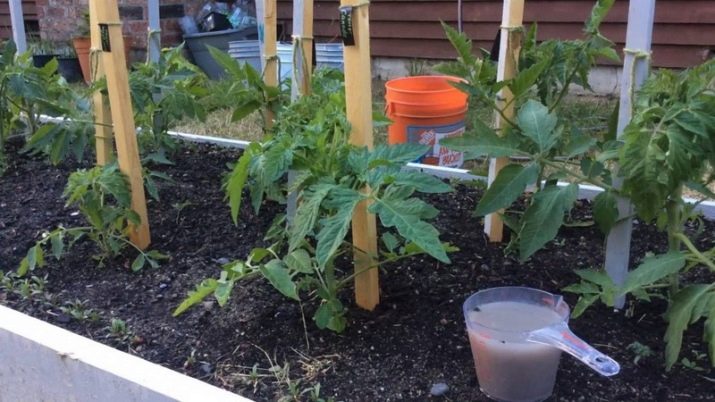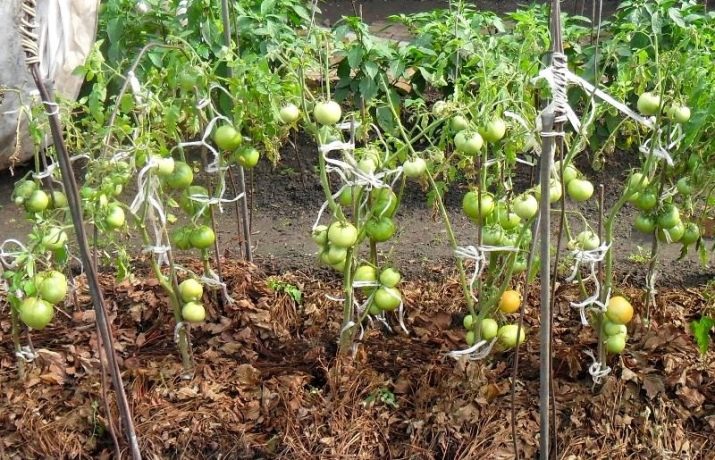Tomatoes "Batyanya": description of the variety and the rules of cultivation
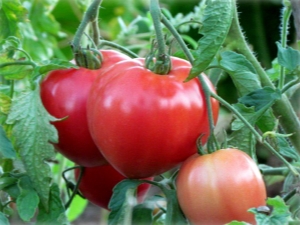
Recently, the cultivation of vegetables associated with a huge number of difficulties that arise due to weather conditions.As a result of unexpected frosts, prolonged droughts, breeders began to produce varieties designed to withstand adverse weather.
These varieties appeared among the tomatoes. Among them are the tomatoes "Batyanya", which in a short time gained popularity in countries such as Russia, Ukraine, Northern Kazakhstan, Belarus and Moldova. This is explained by the fact that tomatoes of this variety are unpretentious, bear fruit in the open ground and bring large and tasty fruits in difficult climatic conditions.
Special features
As a result of selection, scientists from Siberia, G.V. Botyaeva, V.N. Dederko, and O.V. Postnikova, received a tomato “Batyana”. For the first time, tomatoes were tested in the climate of the Far North, where they successfully survived and fruited. Therefore, in 2010, “Batyanya” received a patent as a great achievement of domestic breeders. On the market are the seeds of the official producer "Siberian Garden", which works directly with scientists, breeders.
And also “Batyanya” is sold in the packaging of other manufacturers and in online stores. The most famous of this variety in Ukraine, where it is called the result of national selection.
Consider the main features of the variety.
Fruits of tomatoes
On average, one tomato weighs about 280 grams, with fruits weighing up to 200 grams forming on the upper brushes, and up to 500 grams on the lower ones. It has a heart-shaped, conical shape. The fruits are even, perfect. The color is pink, later - crimson.
The taste of tomatoes is juicy, sweet, depends on the climate and fertilizers used.
Tomatoes "Batyana" are intended for salads, as well as for the manufacture of juices, tomato paste, ketchup and lecho, as well as for pickling.
Shrubs plants
The bush grows in protected ground up to 2 meters, and in open ground up to 1.5 meters with a weeping form. The height of the bush can increase infinitely, only climatic conditions or the owner can limit growth.
It is possible to plant tomatoes both in the greenhouse, and in an open ground. Balconies are not recommended for these purposes due to the high stem height and extensive root.
Tomato yield
“Batyana” starts to give fruit in 3 months after planting, which characterizes this variety as early ripening. One fruit branch brings up to 6 tomatoes. In warm weather conditions, their number may increase to 10.
The yield depends directly on agricultural technology. Up to 13 kg of tomatoes can be harvested from an open ground per m2, and up to 18 kg in a greenhouse. The rich harvest is explained by large-fruited, early ripeness and height of the plant.
Infections
Tomatoes "Batyanya" - non-hybrid variety, so they are prone to various infections. Both in the greenhouse and in the open field, it is necessary to protect against cladosporiosis, late blight, various fungal pests and to regularly carry out prophylaxis.
Microclimate
In too hot conditions, when there are high temperature fluctuations of the day and night, tomatoes may not tangle. For colder conditions, they are well adapted, so they feel great on the open field.
Fruit defects
Cracks in tomatoes with thick skin are practically not formed, and more fleshy fruits often burst during abundant moisture.
Advantages and disadvantages
Tomatoes "Batyanya", according to reviews of vegetable growers, have several advantages:
- quick ripening of fruits;
- tomato taste sensations;
- large fruits;
- good harvest;
- perfectly preserved during transportation;
- unpretentious to weather conditions;
- resistant to many fungal pests.
At the same time, they have the following disadvantages:
- the need for tying bushes to prevent breaks under the weight of their own fruits
- rare germination of seeds;
- the growth of a large number of stepsons that must be removed;
- excessive sensitivity to increased moisture, cracking and rotting.
Landing
By choosing the seed "Batyana" must be approached responsibly, why should pay attention to the following points written on the package:
- name of the variety and characteristics of agricultural technology;
- the number of seeds per pack;
- if 100% seed germination is indicated, it is most likely a hoax;
- a firm with a good reputation notes "seeds do not pickle";
- in the absence of this inscription, the seeds should be treated with a weak solution of potassium permanganate.
The next stage is the preparation of the soil for planting. For this you need to take care of the following:
- the ground must have a drainage so that there is no downtime of the fluid at the root system;
- it is recommended to plant seedlings on the ground, where dill, carrots, zucchini or parsley were previously grown;
- fertilize the soil with various complexes, and wood ash can be used as an available fertilizer.
For greenhouse conditions, seeds are sown from late February to early March, and for open ground - in early April. The soil for planting should consist of equal shares of sod land, peat, humus and rotted sawdust.
About 400 grams of wood ash, 4 grams of urea and 20 grams of superphosphate are added to a container with a substrate with a capacity of 10 liters. The resulting mixture is treated with a weak solution of potassium permanganate and dried.
Seeds are planted in a pot about 10 cm high to a depth of 20-25 mm. The container is filled with the substrate and treated with a weak solution of potassium permanganate. Grooves are made on the surface by 10 mm at a distance of 30 mm. Seeds are located at a distance of 1-2 cm and sprinkled with earth. Water should be watered at room temperature as the surface dries.
Capacity is closed with a film and is located in a warm and well-lit place. The optimum temperature mode is + 25 ... +28 degrees, humidity - 85-90%, lighting - 15 hours a day. After germination, the film is removed.
When there are 2-3 leaves, there is a need for a pick. This process will also avoid the yellowness of the lower leaflets of the seedlings, which indicates a lack of trace elements in the soil.
And also the pick provides:
- selection of the strongest seedlings;
- growth retardation of seedlings;
- root development intensity.
After picking on day 10, the first feeding is done, and the second - a week before transplanting seedlings into a greenhouse or open ground. For this purpose, ready-made solutions are used: “Effecton”, “Nitrophoska”, “Forward”, “Agricola No3”.
When the earth warms up to 15 degrees, and the night cooling will end, it is time to plant seedlings in the ground. 7 days before that, it is possible to harden the plants by taking them to the open air during the day. Before planting into the soil, it is recommended to apply a top-dressing with a complex of mineral fertilizers or a broken egg shell.
The reasons for the appearance of yellowness on plants can be several.
- Lack of beneficial components: potassium, zinc, nitrogen and iron. Fertilizing with the fertilizer complex "Agricola - Forward", "Effecton", as well as superphosphate will come to the rescue.
- Damaged root system in the process of picking or frequent temperature changes. In this case, you do not need to do anything, the problem will disappear in a couple of days.
- Insufficient lighting or lack of soil at the roots of the seedling. To do this, you can transplant the plant into a deeper capacity and provide additional coverage.
Care
Seedlings are planted in open ground or in the greenhouse at a distance of 0.5 meters from each other. Since seedlings can grow to a greater height, care should be taken to support the plant. When several stems are formed on the trunk, they are staving. This process must be carried out every week, since the stepchildren are formed very often.
In the open ground, seedlings are planted in a well-lit and well-protected from the wind plot. The bed should be treated with fertilizers using humus, peat compost, mineral components - nitrogen, potassium, phosphorus.
Plants should be watered in the morning with warm water every day for one week, with about 3 liters of liquid per tomato. After the first week, irrigation is carried out once a week, but the volume of fluid per bush should reach 10 liters. Water should be poured into the root, not falling on the leaves.
And you should also periodically weed the bed and loosen the soil. After 30 days, the plants begin to appear surface root system, after which the soil should be loosened.
After the appearance of the first inflorescences begins fertilization components of organic origin. It provides intensive growth of a plant and enlargement of fruits. When grown to increase the yield will help the sun's rays. Therefore, it is necessary to plant seedlings in the area where the rays of the sun are constantly burning. In the shade the plants will turn yellow and die.
For one season, you need to feed three times:
- after planting seedlings on day 10 - a mullein dissolved in water in a ratio of 1 to 10;
- after the appearance of ovaries, 40 grams of superphosphate, 20 grams of urea, 10 grams of potassium sulphate, 4 grams of potassium permanganate and 2 grams of copper sulfate are added to a 10 liter mullein in water;
- after receiving the first ripe fruits - the same composition as in the previous feeding.
Top dressing is done after irrigation, consumption of the composition per bush is 1.5 liters.
When forming a bush on a plant, only 1-2 stalks should be left. To do this, you need to get rid of all stepsons with a knife, leaving the main stem with a brush on which fruits are formed. The second stem is the stepson growing under the blooming lower brush. In one season, get rid of yellowed and darkened leaves. From the end of July, it is necessary to cut off regrown shoots by 3 cm.
We should not forget about the regular prevention of tomatoes "Batyan". Necessary drugs to protect plants from pests are sold in specialized stores. Their price depends on many factors, so you can buy fertilizer on any budget.
Seed producers say that plants do not undergo late blight, but during an epidemic it is impossible to do without protective components. Therefore, it is recommended to take care of the plants in advance in order to avoid a decrease in the yield or death of the tomatoes. To do this, twice a month, spray tomatoes with a protective agent.
A high level of moisture leads to the risk of the formation of cladosporia and late blight. Therefore, in preventive measures, it is recommended to treat plants with a 1% solution of Bordeaux liquids two weeks after transplantation. Processing is carried out three times before the appearance of tomatoes on 4 brushes. After that, do not use Bordeaux mortar, because tomatoes will be unsuitable for eating.
Tomatoes are often invaded by various insects, such as the white-winged butterfly, which eats the leaves. To destroy insects, it is necessary to identify the cause of their appearance, and then - to take measures to destroy them. Most often the white-winged butterfly already has time to lay the larvae in the seedlings, and in greenhouse conditions the moths begin to grow and multiply. To avoid this, it is necessary to take care of the destruction of the larvae by spraying the plant with special components.
Insects existing in the soil are killed by mulching. Therefore, once a month it is recommended to conduct mulching around tomatoes. If this procedure does not help, you will have to resort to store ready solutions.
You can get rid of surface insects with a soap solution or garlic tincture. The solution is abundantly sprayed with the plants and the fruits themselves.
The process is carried out once every two weeks or each time after a heavy rain, as moisture accumulates on the leaves, as a result of which the solution is washed, the protective layer weakens, thereby the pests begin to eat the plants again.
Reviews
Reviews on the variety of tomatoes "Batyan" are not unanimous.Some growers praise this variety, focusing on their taste characteristics, while others, on the contrary, are disappointed with the taste. This is explained by the fact that early ripe and large tomatoes do not always turn out to be tasty, therefore it is necessary to seriously consider growing tomatoes.
But also many gardeners note the precocity of fruits - they begin to ripen the very first. However, the taste is not always on top. For juiciness fruits need a large amount of heat, sunlight, regular watering, high-quality fertilizer and the correct formation of the plant.
Most of the reviews characterize “Batya” as recommended for cultivation in all climatic conditions. The variety is resistant to cold and intensive growth, which allows it to grow in the Far East and Siberia.
Description of characteristics of tomato variety "Batyanya", see the following video.

